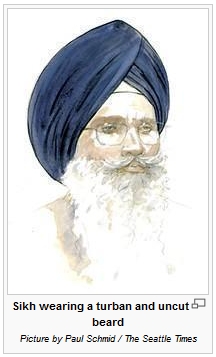 Imagine you are out for drinks with your closest friends. You are caught up in some interesting conversation when, all of a sudden, you are approached by the manager of the establishment and told, "You aren't welcome here."
Imagine you are out for drinks with your closest friends. You are caught up in some interesting conversation when, all of a sudden, you are approached by the manager of the establishment and told, "You aren't welcome here."
"Why?" you ask. "No hats allowed, take it off or leave now."
Back in the early 20th century, hats were considered to be as necessary as shoes.
In the zenith of men's hats, the 1920s, a dress code book of the time stated that, "not one man in 10,000 would risk being the butt of ridicule by failing to conform and wear a hat."
A fixture in men's wardrobes and a monitored social convention, the hat told people who you were. Top hat, boater, tuque, beret, Stetson, beetleback derby or snap-brim fedora, back then, without a hat, you were a hopeless nobody.
In Charles Dickens' Great Expectations, Magwitch is "a fearful man" because, among other things, he is "a man with no hat." In Lord Dunsany's 1914 play, The Lost Silk Hat, a gentleman locked out of a house is panicked: "I must have my hat. I can't be seen in the streets like this!"
This was certainly not the first time I have been asked to remove my hat.
There still seems to be a perception that a hat signifies disrespect toward some individual, group or God, rather than a freedom of expression and individuality.
When I was in high school, my friends and I fought for our right to wear hats, going so far as to stage a protest complete with signs that read, "Toupees are hats too!"
I even owned my own Icelandic tuque company for many years, and am well known for always wearing a hat.(If only if I had a dime for every time someone said, "I have never seen you without a hat.") I have removed my hat in certain situations out of respect when it was requested, but I have yet to hear any truly good reason I should take it off.
It is interesting that this type of discrimination is taken much more seriously when religion is involved.
If the owner of an establishment demands that a Sikh remove his turban or a Muslim remove her burka, the humour quickly disappears from the situation, and the establishment in question becomes subject to the scrutiny of the media. I fully support the right for a Sikh to wear his turban, but I also request this same respect for my choices in what I wear.
While the tuque is not welcome in many clubs, American and French revolutionists used the tuque (borrowing from the icon of the liberated Phrygian slave) as a symbol of freedom. The French called the hat "bonnet de la Liberte," and the Americans called the tuque "The Liberty Cap." The tuque was later a rallying symbol for the 18371839 Patriotes Rebellion, in which French-speaking citizens from Quebec fought against British rule. The control the North Korean government exerts over its people was evident at the recent outdoor funeral for the late Kim Jong-il, where, despite freezing temperatures, no hats were allowed.
Fifty to 100 years ago, hat etiquette was surprisingly complicated, but everyone knew the rules. No other article of clothing was more donned, tipped or removed depending on the time of day, day of the week, the type of event, whether the national anthem was playing or whether a woman was present, and heaven help you if you ever showed the inside of your hat.
Hats went from being mandatory, to falling out of fashion (John F. Kennedy's habit of not wearing a hat was seen as the final blow for hat wearing), and now hats are making a comeback. There must be a time when we question the relevance and value of old customs - some serve a strong social purpose, while others we just do because those that came before us did. Even a spokesperson for the famous etiquette institution, The Emily Post Institute, says it is now OK for a man to wear a hat at a bar or nightclub as part of his style. But despite acceptance by some, the hat renaissance is creating a quandary for a generation who grew up without any hard and fast hat rules. So we are making up our own rules.
George Carlin put it best in his comedic rant about hats, "What possible relationship exists between the uncovered head and a feeling that ought to live in your heart? And what is so bad about hats that you have to take them off? Why not take off your pants?
Personally, I would never want to be a member of any group where you either can't wear a hat or you have to wear a hat."
I agree with Carlin - regarding hats, there should be one rule and one rule only: hats optional.
Connor Gottfried is the chief technology officer of a Calgary e-Learning company and always wears his hat.
© Copyright (c) The Calgary Herald

